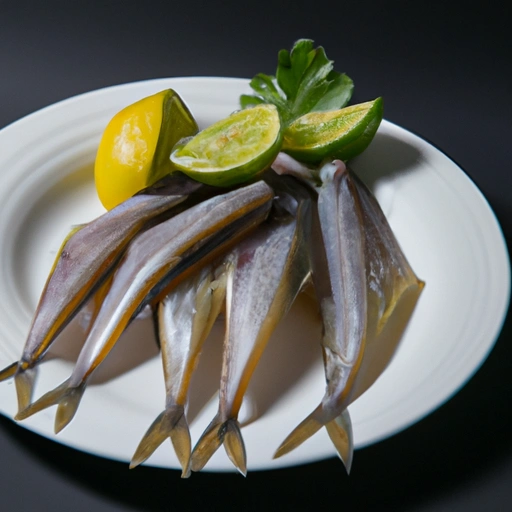Flying Fish
Description

Flying fish is a fascinating sea creature known for its unique ability to glide above the water's surface. This ability is thanks to its specially adapted wing-like fins. Beyond its interesting behavior, flying fish is also an edible seafood that has found its way into the culinary traditions of various cultures, particularly in the regions where they are commonly found, such as the Caribbean Sea, and parts of the Pacific and Atlantic Oceans.
Common uses
Flying fish is commonly used in sushi and sashimi in Japan, while in the Caribbean, it is often fried or steamed. The fish's mild flavor and light texture make it suitable for a variety of cooking methods and recipes, from simple grilled dishes to more elaborate preparations.
Nutritional value
Calories
100 grams of flying fish contains approximately 85 kcal (356 kJ).
Protein
Flying fish is a good source of protein, offering about 20 grams per 3.5 ounces (100 grams).
Fat
The fish is relatively low in fat, with around 1 gram of fat per 3.5 ounces (100 grams).
Carbohydrates
Flying fish contains negligible amounts of carbohydrates, making it an excellent choice for low-carb diets.
Vitamins
It is a source of B vitamins, particularly vitamin B12, which is crucial for nerve health and the production of DNA.
Minerals
Flying fish provides minerals such as phosphorus, selenium, and iodine, which are important for maintaining bone health, thyroid function, and antioxidant defenses.
Health benefits
As a lean protein source with various vitamins and minerals, flying fish contributes to muscle development, supports the immune system, and may promote heart and brain health due to its omega-3 fatty acid content.
Potential risks
While flying fish is generally safe for consumption, it may contain trace amounts of mercury and other pollutants, which can be a concern in high quantities, especially for pregnant women and young children.
Common recipes
Flying fish is featured in dishes such as the Bajan 'flying fish cutter' sandwich, Japanese 'tobiuo sushi' and a variety of Caribbean curries and stews.
Cooking methods
This versatile ingredient can be prepared through grilling, frying, steaming, baking, or even raw in sashimi when fresh and properly handled.
Pairing with other ingredients
Flying fish pairs well with fresh herbs, tropical fruits, and light sauces that complement its delicate flavor without overpowering it.
Summary
Flying fish is a distinctive seafood offering a blend of cultural significance and culinary versatility. It is celebrated in specific regions for its taste and nutritional benefits and can be prepared in numerous ways to suit different palates and dietary preferences. Although it comes with some risks, like any seafood, its inclusion in a balanced diet can offer a variety of health benefits.